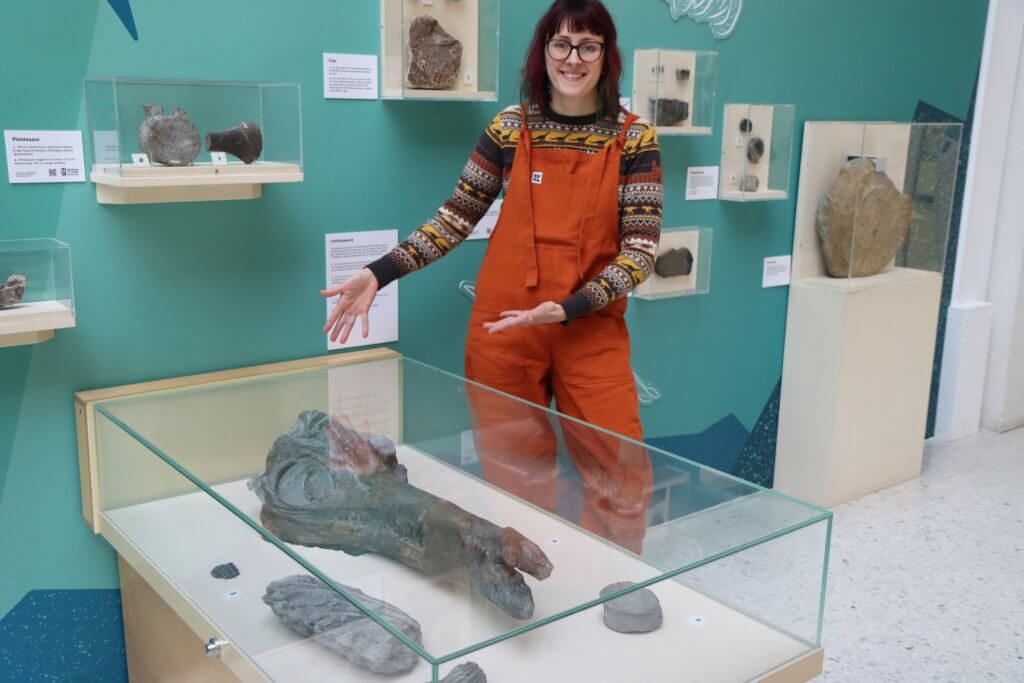Coventry’s Herbert Museum & Art Gallery needs your help!
The venue’s popular ichthyosaur skull has been wowing prehistoric enthusiasts for decades, particularly after some much needed conservation work last year – the process brought to the surface a host of never before seen features.
Now it seems only right the specimen is given its own name, just like fellow Jurassic Herbert dweller Dippy. It’s hoped giving the skull its own moniker will personalise it and give the exhibition more character.
So the people of Coventry are being asked to help come up with a suitable name, something that will make the item even more beloved to visitors.
The Herbert will run a naming competition, complete with judges, and the person who provides the winning name will be in for a special prize.
The naming competition will open on January 13 to coincide with the 200th anniversary of the discovery of Megalosaurus bucklandii, the first ever dinosaur to be officially named.
Entrants will have just over a month to submit a name at the museum before the list will be narrowed down. The public will then have the final say in a two week-long vote before the name is announced in time for the Easter school holidays.
Two respected palaeontologists will make up the judging panel – Emma Bernard, Curator of Fossil Fish at the Natural History Museum and Dr Jon Radley, Curator of Natural Sciences at Warwick Museum and co-describer of Warwickshire’s own theropod dinosaur Cruxicheiros.
Herbert curator Ali Wells said: “The ichthyosaur skull is an incredible specimen which helps us understand the region’s Jurassic past. It also has a wonderfully rich history since it was discovered in a Warwickshire quarry in 1933.
“So I am excited to invite the people of Coventry to come up with a name for our star fossil. The winner will not only have the prestige of having named an Ichthyosaur, something they will be able tell people forever, but also, receive a special goodie bag from the Herbert gift shop.”

This specimen, along with tens of others, was found at Harbury Cement Quarry. A well-known Coventry naturalist and member of the Coventry and District Natural History and Scientific Society, EF Nicholls, arranged for the skull to be moved from the quarry to Coventry for display.
This heavy specimen was transported from Harbury by his son, who, tiring of the weight on the saddle of his bike, offloaded his cargo in a ditch at Princethorpe. On returning home he was severely reprimanded by his father and made to return to the ditch the next morning and complete the fossil’s journey to Coventry, where it was placed in the Field Club room at Upper York Street.
The Nicholls fossil collection was given to the Herbert in 1961, the year after the museum opened. This specimen was a key part of our natural science displays from 2008 to 2020 and is now the central piece in our Warwickshire Jurassic Sea display alongside Dippy in the Covered Court.
Ichthyosaur facts:
Ichthyosaurs are not dinosaurs, but their sea-based cousins, also known as marine reptiles. They lived in the sea and came to the surface for air.
Ichthyosaurs are extinct and looked similar to modern dolphins, although they are not related. They hunted sea creatures such as ammonites and fish.
Ichthyosaurs had large eye sockets and special bones, called a sclerotic ring, which helped to protect the eye from water pressure at depth. Different species ranged from one to 20 metres long.
Local facts:
The Jurassic Period began about 200 million years ago and lasted for around 55 million years. Dippy lived towards the end of the Jurassic, about 150 million years ago.
At the beginning of the Jurassic, Britain was further south than it is now. Much of England and Wales were covered in warm shallow seas, including Warwickshire. These seas were filled with marine life, such as shellfish, reptiles and squid and snail-like creatures from the cephalopod family.
Several complete ichthyosaur skeletons have been found in Warwickshire.